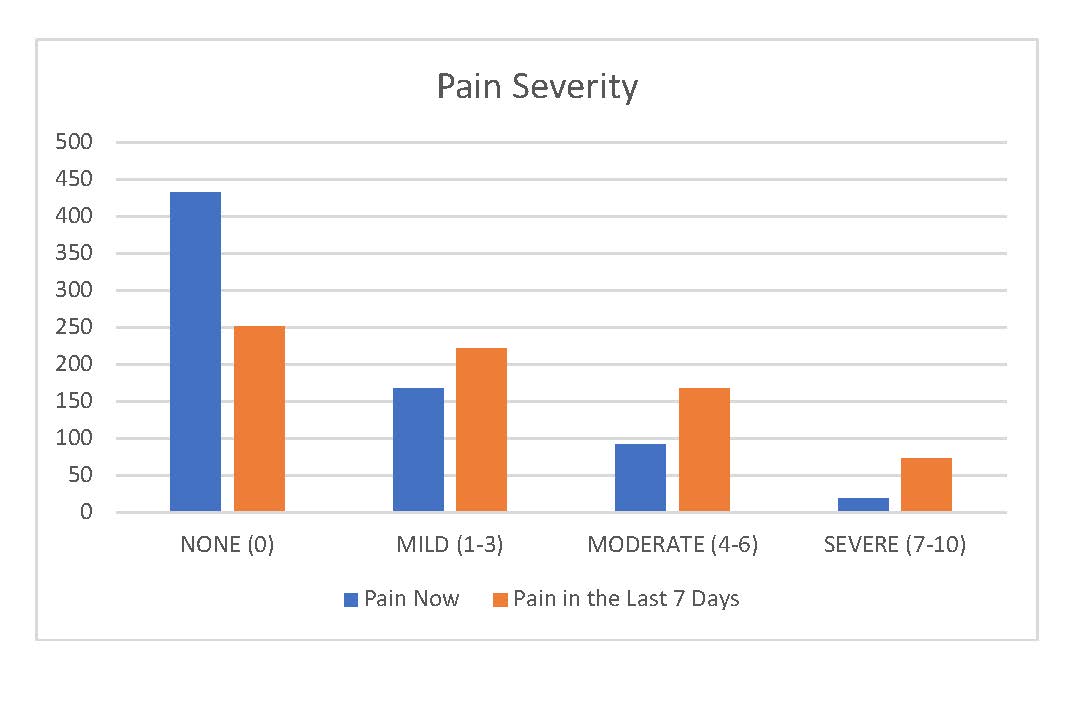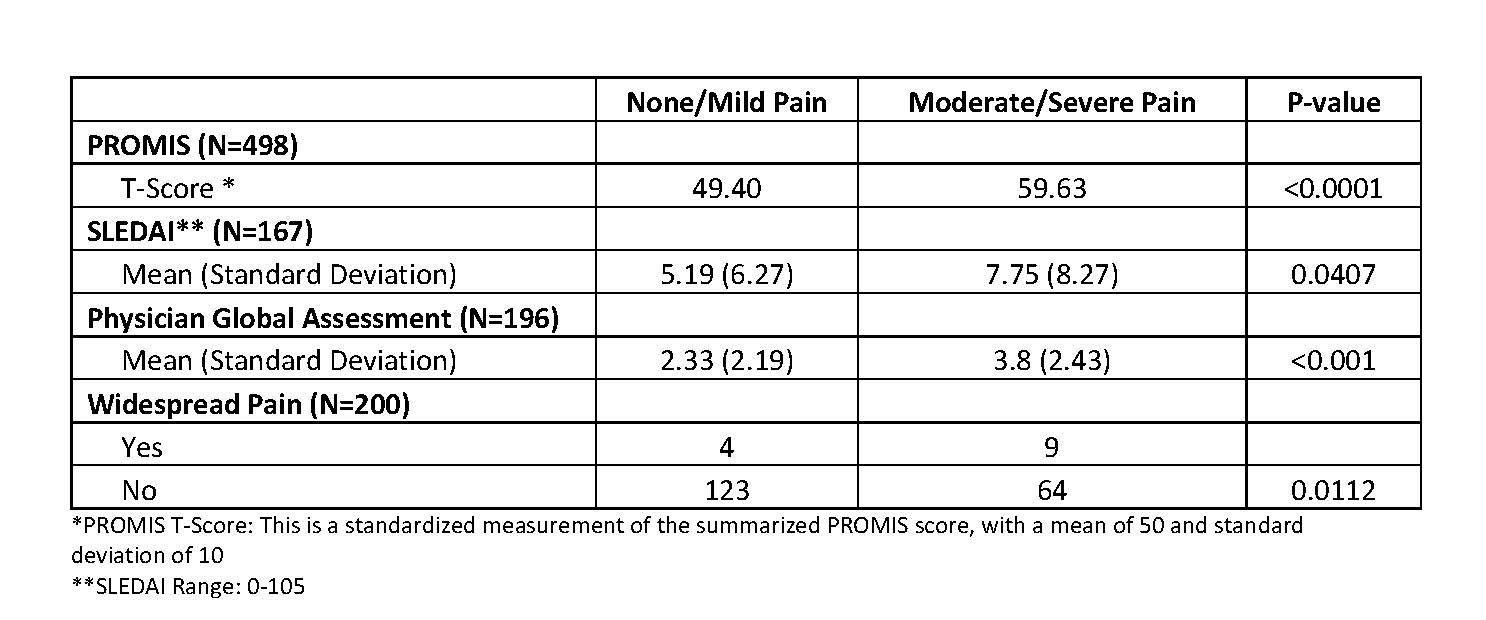Session Information
Session Type: Poster Session A
Session Time: 6:00PM-7:00PM
Background/Purpose: The prevalence, severity and impact of chronic pain in pediatric patients with autoimmune diseases such as childhood onset SLE (cSLE) and juvenile dermatomyositis (JDM) has yet to be well studied. This study used the Childhood Arthritis and Rheumatology Research Alliance (CARRA) Registry to 1) describe the prevalence and severity of pain in cSLE and JDM patients and 2) evaluate the impact of pain symptoms on their daily functioning.
Methods: All patients 8 years and older diagnosed with lupus-spectrum diseases (SLE, MCTD, APLS, Sjogrens Syndrome and cutaneous lupus) as well as JDM in the CARRA Legacy registry enrolled between 2010 and 2014 were included. Data analyzed for this study included demographic information, disease severity, pain intensity scores and quality of life measures (PROMIS Pain Interference scale), Physician Global Assessment (PGA 0-10) and physician assessment of the presence of widespread pain (yes/no). Descriptive statistics were computed to examine pain and clinical characteristics of the cohort. Statistical comparisons between patients who reported no/mild pain versus those who reported moderate/severe pain were performed using the method of least mean squares (PROMIS Pain Interference), and to evaluate for differences in the disease activity between the none/mild pain cohort and the moderate/severe pain cohort, chi-squared test, and t-test or Wilcoxon test was performed as appropriate.
Results: CARRA registry data was obtained on all patients diagnosed with lupus-spectrum diseases and JDM, with an initial cohort of 788 patients. Out of the 717 patients with valid data, 476 (66.39%) patients reported no or mild pain, 239 (33.61%) patients reported moderate to severe pain in the last week. For the presence of current pain, 600 (84.39%) patients reported no or mild pain and 111 (15.61%) patients reported moderate or severe pain (Figure 1). Those who reported moderate/severe pain reported significantly greater (p 0.0001) scores on the PROMIS pain interference scale than those who reported no/mild pain in the past week. Those who reported moderate/severe pain in the last week had significantly higher (p=0.0407) mean SLEDAI scores, and statistically higher PGA (p 0.0001) than those who reported no/mild pain. Finally, those who reported moderate/severe pain in the last week had a significantly higher (p=0.0112) presence of widespread pain compared to those who reported no/mild pain (Figure 1).
Conclusion: This retrospective study shows that a subset of pediatric patients (~33%) diagnosed with lupus-spectrum diseases and JDM report having moderate/severe pain in the last 7 days and these patients experience significantly reduced quality of life due to pain interference compared to those who have no/mild pain. In addition, this study noted that there was frequent missing data in the evaluation for the presence of widespread pain in a cohort of pediatric patients with rheumatic diseases, highlighting the need for future prospective research to determine the prevalence of widespread pain, such as secondary juvenile fibromyalgia, in this cohort.
 Figure 1: Pain Severity at Clinic Visit and in the Last Two Weeks Prior to Visit
Figure 1: Pain Severity at Clinic Visit and in the Last Two Weeks Prior to Visit
 Table 1: Results of Disease Activity and Pain Measures
Table 1: Results of Disease Activity and Pain Measures
To cite this abstract in AMA style:
Patrizi S, Kashikar-Zuck S, Investigators C, Altaye M, Weiss J. Prevalence of Chronic Pain in Childhood-onset Systemic Lupus Erythematosus and Juvenile Dermatomyositis [abstract]. Arthritis Rheumatol. 2023; 75 (suppl 4). https://acrabstracts.org/abstract/prevalence-of-chronic-pain-in-childhood-onset-systemic-lupus-erythematosus-and-juvenile-dermatomyositis/. Accessed .« Back to 2023 Pediatric Rheumatology Symposium
ACR Meeting Abstracts - https://acrabstracts.org/abstract/prevalence-of-chronic-pain-in-childhood-onset-systemic-lupus-erythematosus-and-juvenile-dermatomyositis/
